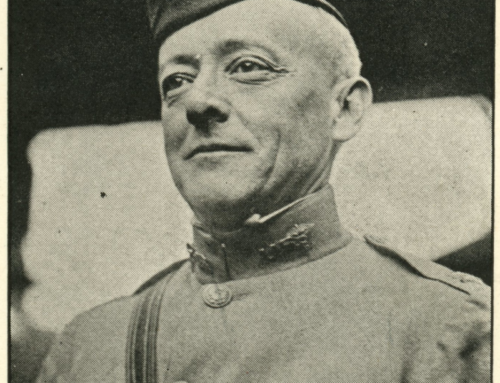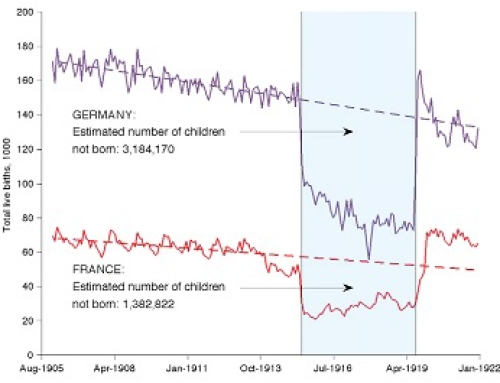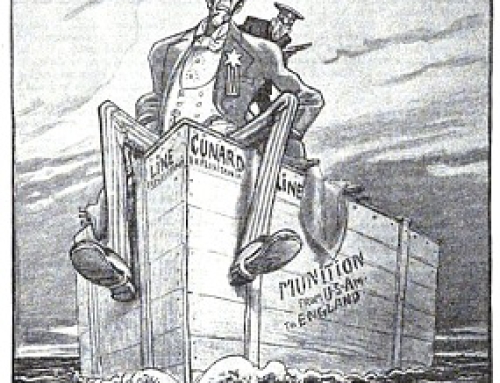by Richard van Pelt, WWI Correspondent
Today in 1914 was a Sunday. There was no issue of the Capital Journal, and in the Statesman, war news was as it had been the day before and would remain for the coming months.
The “Race to the Sea” lasted from the 17th of September to the 19th of October. The Race to the Sea was the struggle by French and British forces by both sides to prevent flanking movements that could have led to decisive victories by one side or the other. By October, the forces had reached the sea. When the armies occupied the last open areas along the borders between Belgium, France and Germany, there then existed a static front from the North Sea to the Swiss border.
The editorial page of the Statesman has an opinion piece by Miriam Russell, with the title “Women Are Not Citizens:”
Inez Milholland Boissevain is not only an active suffragist but she is also a practicing lawyer. Or rather, she was. She was admitted to the New York state bar and for a time carried on her profession undisturbed. Last winter she defended a moving picture film company in a legal action. The company did not pay her bill and she sued for the $1000 for services rendered. The company refuses to pay and bases it defense not on the fact she did not do the work or did not do it well, but on a much more curious reason.
Inez Milholand, American-born of American parents, graduate of an American college and an American law school, recognized and accredited practitioner at the bar of an American state, married a Hollander. In so doing, though they are both living in America, she has lost her American citizenship. The film company maintains that as she is no longer an American citizen she has forfeited her right to practice law in the United States, and cannot collect her fee.
Early legislation limited naturalization eligibility to “free white persons,” and did not distinguish gender. During the 19th Century, immigration law began to draw distinctions regarding married women. In an article in Prologue Magazine, published quarterly by the National Archives and Records Administration (NARA), the issue of a woman’s citizenship status explains:
New laws of the mid-1800s opened an era when a woman’s ability to naturalize became dependent upon her marital status. The act of February 10, 1855, was designed to benefit immigrant women. Under that act, “
[a]ny woman who is now or may hereafter be married to a citizen of the United States, and who might herself be lawfully naturalized, shall be deemed a citizen.” Thus alien women generally became U.S. citizens by marriage to a U.S. citizen or through an alien husband’s naturalization. The only women who did not derive citizenship by marriage under this law were those racially ineligible for naturalization and, since 1917, those women whose marriage to a U.S. citizen occurred suspiciously soon after her arrest for prostitution. The connection between an immigrant woman’s nationality and that of her husband convinced many judges that unless the husband of an alien couple became naturalized, the wife could not become a citizen. While one will find some courts that naturalized the wives of aliens, until 1922 the courts generally held that the alien wife of an alien husband could not herself be naturalized.In innumerable cases under the 1855 law, an immigrant woman instantly became a U.S. citizen at the moment a judge’s order naturalized her immigrant husband. If her husband naturalized prior to September 27, 1906, the woman may or may not be mentioned on the record which actually granted her citizenship. Her only proof of U.S. citizenship would be a combination of the marriage certificate and her husband’s naturalization record. Prior to 1922, this provision applied to women regardless of their place of residence. Thus if a woman’s husband left their home abroad to seek work in America, became a naturalized citizen, then sent for her to join him, that woman might enter the United States for the first time listed as a U.S. citizen.
In other cases, the immigrant woman suddenly became a citizen when she and her U.S. citizen fiance were declared “man and wife.” In this case her proof of citizenship was a combination of two documents: the marriage certificate and her husband’s birth record or naturalization certificate. If such an alien woman also had minor alien children, they, too, derived U.S. citizenship from the marriage. As minors, they instantly derived citizenship from the “naturalization-by-marriage” of their mother. If the marriage took place abroad, the new wife and her children could enter the United States for the first time as citizens. Again, if these events occurred prior to September 27, 1906, it is doubtful any of the children actually appear in what is, technically, their naturalization record. The lack of any record for those children’s naturalization might cause some of them, after reaching the age of majority, to go to naturalization court and become citizens again.
Just as alien women gained U.S. citizenship by marriage, U.S.-born women often gained foreign nationality (and thereby lost their U.S. citizenship) by marriage to a foreigner. As the law increasingly linked women’s citizenship to that of their husbands, the courts frequently found that U.S. citizen women expatriated themselves by marriage to an alien. For many years there was disagreement over whether a woman lost her U.S. citizenship simply by virtue of the marriage, or whether she had to actually leave the United States and take up residence with her husband abroad. Eventually it was decided that between 1866 and 1907 no woman lost her U.S. citizenship by marriage to an alien unless she left the United States. Yet this decision was probably of little comfort to some women who, resident in the United States since birth, had been unfairly treated as aliens since their marriages to noncitizens.
By the late nineteenth century, marital status was the primary factor determining a woman’s ability to naturalize. But other factors might have influenced a judge’s decision to grant or deny a woman’s naturalization petition. Some judges seemed unaware of legal naturalization requirements and regularly granted citizenship to persons racially ineligible, who had not lived in the United States the requisite five years, or did not display “good moral character.” It may be that these judges also granted citizenship to women regardless of their husband’s nationality. Women’s naturalization records dating from the 1880s and 1890s can be found, for example, among the records of the U.S. District Court for the District of Columbia (Record Group 21), though these records do not indicate the women’s marital status.
After 1907, marriage determined a woman’s nationality status completely. Under the act of March 2, 1907, all women acquired their husband’s nationality upon any marriage occurring after that date. This changed nothing for immigrant women, but U.S.-born citizen women could now lose their citizenship by any marriage to any alien. Most of these women subsequently regained their U.S. citizenship when their husbands naturalized. However, those who married Chinese, Japanese, Filipino, or other men racially ineligible to naturalize forfeited their U.S. citizenship. Similarly, many former U.S. citizen women found themselves married to men who were ineligible to citizenship for some other reason or who simply refused to naturalize. Because the courts held that a husband’s nationality would always determine that of the wife, a married woman could not legally file for naturalization.







Leave A Comment